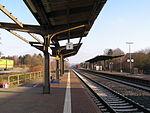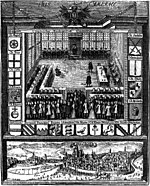Altenberg Abbey, Solms
German religious building and structure stubsHesse building and structure stubsNunneries in GermanyPremonstratensian monasteries in Germany

Altenberg Abbey (German: Kloster Altenberg) is a former Premonstratensian nunnery situated between Solms and Wetzlar, Hesse, Germany. It was founded in c. 1170 and dissolved in 1802. It had a strong connection with the House of Nassau, several of whom were nuns and abbesses, and some family members, including Otto I, Count of Nassau, were buried here; it was also a burial place for the Counts of Solms. The buildings were seriously damaged by a fire in 1952. Those that survive accommodate a meeting centre for the local deanery and since 2018 a small Protestant religious community.
Excerpt from the Wikipedia article Altenberg Abbey, Solms (License: CC BY-SA 3.0, Authors, Images).Altenberg Abbey, Solms
Altenberg,
Geographical coordinates (GPS) Address Nearby Places Show on map
Geographical coordinates (GPS)
| Latitude | Longitude |
|---|---|
| N 50.55931 ° | E 8.44599 ° |
Address
Altenberg 4
35606
Hesse, Germany
Open on Google Maps










